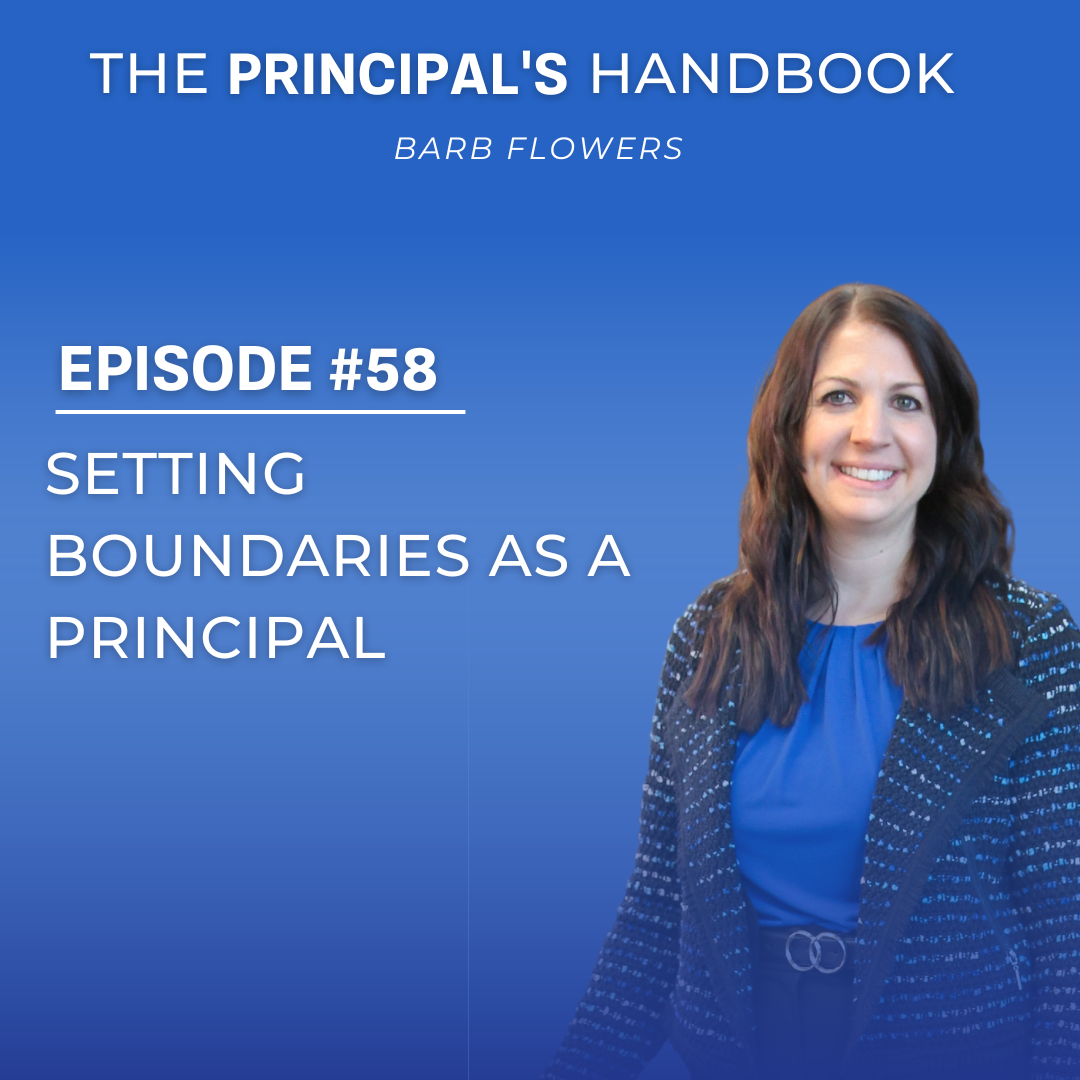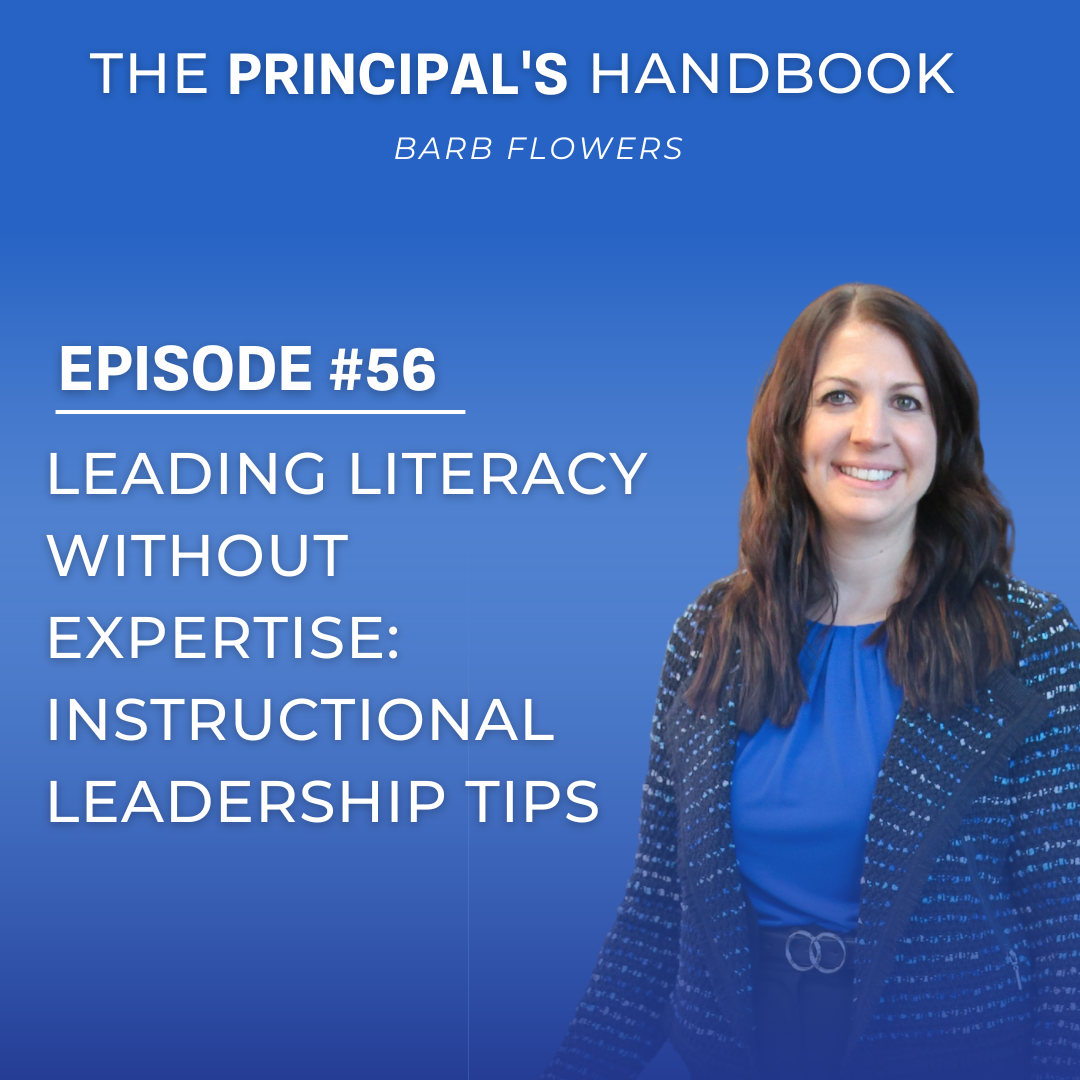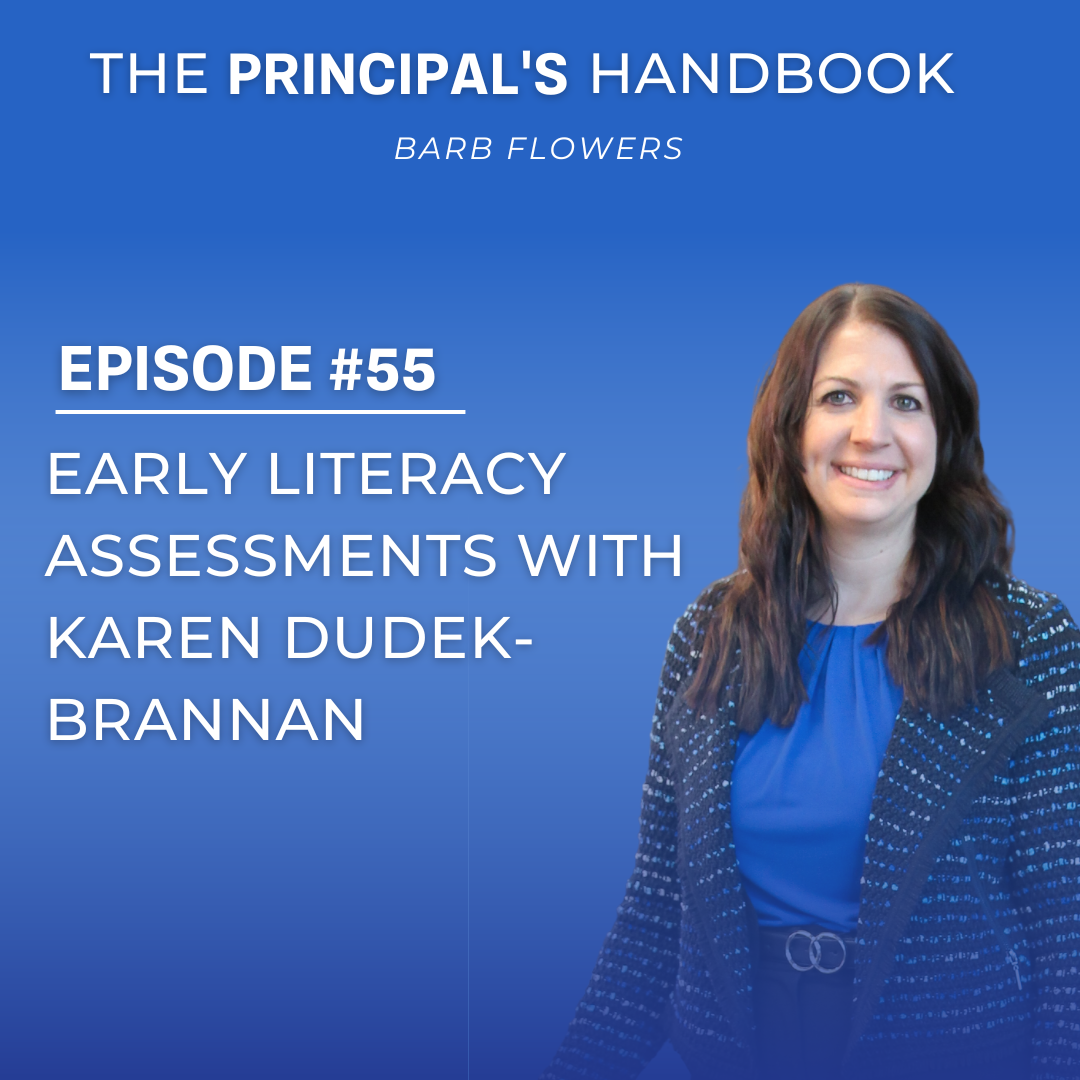[00:00:00]
Welcome to The Principal’s Handbook, your go-to resource for principals looking to revamp their leadership approach and prioritize self-care. I’m Barb Flowers, a certified life coach with eight years of experience as an elementary principal. Tune in each week as we delve into strategies for boosting mental resilience, managing time effectively, and nurturing overall wellness. From tackling daily challenges to maintaining a healthy work-life balance, I’m Barb Flowers. We’ll navigate the complexities of school leadership together. Join me in fostering your sense of purpose as a principal and reigniting your passion for the job. Welcome to a podcast where your well-being is the top priority.
Welcome, everyone, to The Principal’s Handbook. I’m here today with Brian Callahan, and I’m excited to have him on the podcast as our guest. Brian will start by telling us a bit about himself and his work in education. He has a wealth of experience to share. He has experience as an administrator, is currently a doctoral candidate working on his EdD, and works for a state support team. So, Brian, go ahead and tell us more about your background.
Brian Callahan:
Thanks, Barb, and I appreciate you having me on. My educational background is unique. I’m from Northeast Ohio and attended Kent State, where I earned a degree in health and physical education, covering K–12. I used that licensure in urban, suburban, and rural schools in Northeast Ohio. After seven years in the classroom, coaching various sports, I decided to move into administration. In 2018, I became an assistant principal at Field Local, where I was for three years before moving to a neighboring district, Streetsboro, for a year as an AP.
During my time at Streetsboro, it was a unique year as it followed the pandemic. Managing that year was particularly challenging. Eventually, my career led me to my current role at the state support team in Cuyahoga County, where I work with districts that are struggling academically. I focus on helping districts with low academic scores and graduation rates. My work involves taking a systems approach—identifying areas for improvement and figuring out where to invest resources effectively. A big part of my role is also focused on building school climate with PBIS, and I’m now working on virtual learning environments, examining how PBIS functions in the online learning world post-pandemic.
I’m also a doctoral candidate focusing on principal retention in urban settings, particularly looking at the impact of formal mentoring programs and how they influence principal longevity in those districts. It’s been quite a journey from teaching P.E. in kindergarten to working with district leaders on large-scale improvement plans.
Barb:
That’s amazing, Brian! Your experience is incredibly diverse. We’ll definitely have to do another episode on your dissertation once it’s complete. Mentoring and coaching for principals are such important topics.
I wanted to have you on the podcast today because of your wealth of knowledge, particularly in PBIS. You’ve worked with numerous districts and have such a wide range of experience. As our listeners are starting the school year and gathering data, what type of data-informed decisions do you help schools with? Can you share some tips?
Brian:
Yeah, data-informed decisions are critical. First and foremost, it’s essential that teams are collecting data relevant to what they’re trying to improve. For example, in PBIS, teams need to ensure that there’s a system of data collection that’s quick for teachers to complete and easy for administrators to decipher. It’s important to ask, “What story is the data telling us?”
Let’s say there’s a recurring issue with students in the hallway between periods. If the data is showing this, it tells us we need to explore this issue further and identify what needs to be done to address it. The data itself isn’t good or bad—it just tells us what’s happening. As I like to say, “Don’t get furious, get curious!” The next step is always, “What now?” What strategies can we use to address the issue?
When principals are doing walkthroughs or observing during transitions, they should look for trends—like noticing that only 50% of teachers are out by their door during transitions. This might indicate that more supervision is needed. The key is ensuring data collection is easy, accessible, and actionable. If teachers are required to write referrals, and it’s taking longer than two minutes, it’s probably too complicated. We want the process to be efficient and not become a barrier.
Also, it’s important to clarify who will be looking at the data. Is it one person who then shares the results with the team? Or is the team analyzing it together? That decision should be part of the overall procedure in place, and data should be reviewed frequently by the appropriate teams, like the BLT, TBT, or PBIS teams.
Barb:
When we worked together, you created a Google form for our PBIS data collection. It was simple, but it worked for our building. We weren’t using an expensive platform like Swiss, and we found the Google form to be an effective solution. What are your thoughts on this? Would you suggest any changes to that system?
Brian:
I think your Google form was a great solution, especially considering the challenges many schools face with funding. We tried to make the process quick and simple, and it worked. With a simple Google form, we could track necessary data, and it was easy for teachers to use.
However, some schools use more sophisticated tools like Swiss, which is a PBIS app that streamlines the process of collecting and analyzing data. For districts that can’t afford Swiss, having a smaller Google form or an easy-to-use system is key. Whatever the platform, it needs to be accessible and quick for teachers to complete.
Another point is ensuring the data is actionable. If you’re looking at referrals, what is the data telling you? Are there recurring issues during specific times or locations? For example, if you see a high number of referrals for students in the hallway during transitions, it might suggest that more supervision is needed. We need to look at the whole picture.
Also, it’s not just about focusing on negative behaviors. You need to recognize positive behaviors as well. Tools like ClassDojo are great for acknowledging students for meeting PBIS expectations, such as being respectful, responsible, and safe. This helps balance the data and focuses on reinforcing good behavior, not just addressing bad behavior.
Barb:
When it comes to focusing on behaviors, especially for students who need more support, how can schools and teachers use data to target specific behaviors? Should they focus on one behavior at a time?
Brian:
Yes, focusing on one behavior at a time is key, especially for students who need more targeted supports. PBIS works in tiers, with tier one addressing the needs of the entire school population. Around 80% of students should respond to tier one supports. However, 10-15% may need additional tier two supports, and the top 5% may require intensive tier three interventions.
When we look at students who need more support, we want to highlight any positive behaviors they exhibit, no matter how small. Acknowledging success, even in just one area, helps reinforce that behavior. For example, if a student struggles but demonstrates responsible behavior in one area, focusing on that and acknowledging it can encourage more positive behaviors in other areas.
The data you collect should help you determine when a student is ready to move from tier one to tier two supports, and it shouldn’t be based on gut feeling. You want to base decisions on clear data and allow teachers to focus on the positives while still addressing areas of concern.
Barb:
That’s such a good point—focusing on the positives is vital. Sometimes, teachers and even principals struggle with that, especially when a student has multiple behaviors. How do you handle data that might reflect a bias in the teacher’s perception of a student’s behavior?
Brian:
This is an important issue. Adult behavior often sets the tone for the climate of a building. Teachers’ perceptions of students can influence how they respond to them. If a teacher has a bias against a student, it can create a cycle of negative interactions that affect the student’s behavior and their relationship with the teacher.
I’ve always believed that relationships come first. It’s not just about teaching content—it’s about teaching students. If a teacher connects with their students, they are more likely to have a positive impact. So, addressing biases is key. As principals, we need to help teachers recognize and manage their biases so they can respond more empathetically to students.
Barb:
That’s such a great point, Brian. As you know, the thoughts we have about students can create emotions and actions that influence the climate of the classroom. By checking our biases and being more empathetic, we can help our students change their behaviors and relationships with adults.
Brian:
Exactly! The behavior of adults influences the entire building. When we focus on relationships and have empathy, we create a positive environment where students can thrive.
Barb:
One last question before we wrap up. How can schools use AI to interpret PBIS data and make better decisions?
Brian:
AI can be a great tool for analyzing large data sets and providing insights into trends. It can help identify patterns that might not be obvious right away. For example, AI can process referral data and give teams suggestions on where to focus their efforts. It removes biases and helps provide a more objective view of the data.
AI tools can also help teams make sense of complex data, such as proficiency scores or behavior trends, and provide recommendations for next steps. As AI continues to be integrated into education, it can be a powerful tool for helping schools make data-driven decisions and improve outcomes.
Barb:
I agree. AI is already here, and it’s going to continue growing. I think embracing it is key for improving decision-making and supporting students and staff more effectively.
Brian:
Exactly! It’s all about using technology to enhance what we’re already doing, not replace it. AI can help provide an extra set of eyes, making sure we’re not missing anything important.
Barb:
Well, thank you so much, Brian, for being here today. We’ve covered a lot of great information about using PBIS data and making data-informed decisions. I appreciate you sharing your expertise with us!
Brian:
Thanks for having me, Barb! It was a pleasure.






